In Everglades National Park, the wonders of Florida’s diverse ecosystem come to life! Today, Bethany Augliere, a Florida mom and marine biologist, is here sharing her personal insights, tips, and recommendations for an unforgettable family adventure in this magnificent wilderness. Navigating the Everglades with kids can be a thrilling and educationally-enriching experience, and in this post, we’ll provide valuable tips on when to visit, what to expect, the best kid-friendly hiking trails, what you can expect when encounting unique marine and wildlife, camping recommendations, and much more. Are you ready to discover the Everglades?!
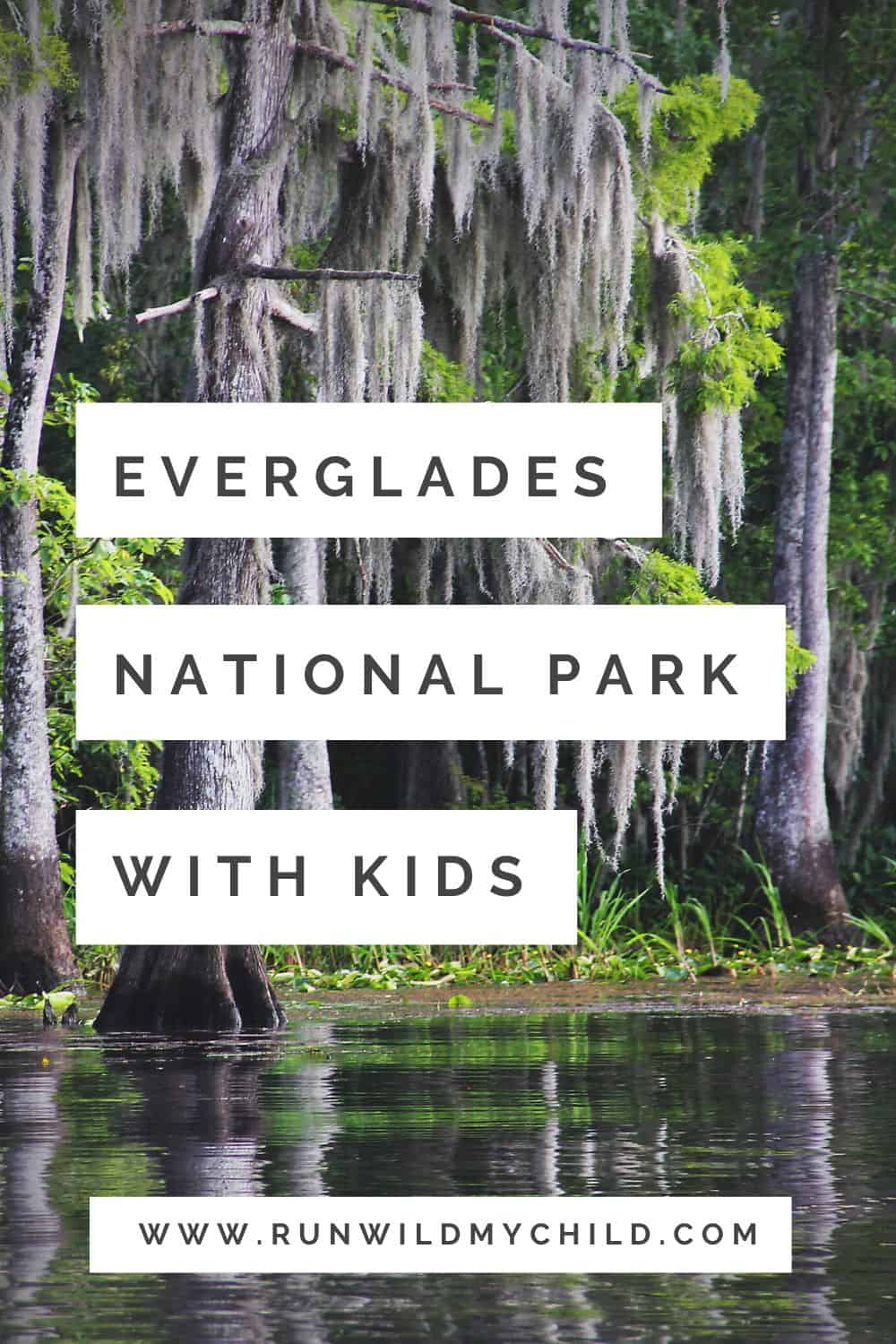
Everglades National Park with kids
As someone who lives in South Florida with two adventurous young kids, I know that the Sunshine State offers so much more to families than trips to theme parks, including 11 national parks. These public lands range from the gator-filled swamps of Big Cypress National Preserve to the well-intact remains of Fort Jefferson in Dry Tortugas National Park. But, perhaps the most famous is the 1.5 million-acre subtropical wilderness (equivalent to the size of Delaware) of the Everglades National Park in South Florida — a personal favorite.
The Everglades National Park is also an international treasure, a World Heritage Site, an International Biosphere Reserve, a Wetland of International Importance, and a specially protected area under the Cartagena Treaty. The Everglades is a massive park — the third largest in the lower 48 — and has so much to offer families. You can easily tailor your trip to meet the specific needs of your family, whether that includes a trek through a cypress swamp in a slough slog, kayaking the seagrass meadows of Florida Bay or an exhilarating airboat ride.
The Everglades is one of our favorite places for wildlife viewing and is home to iconic species like American alligators and roseate spoonbills to threatened animals, including the West Indian manatee and even American crocodiles. Yes, Florida even has crocodiles! The Everglades is the only place in the world to see both crocodiles and alligators co-existing.
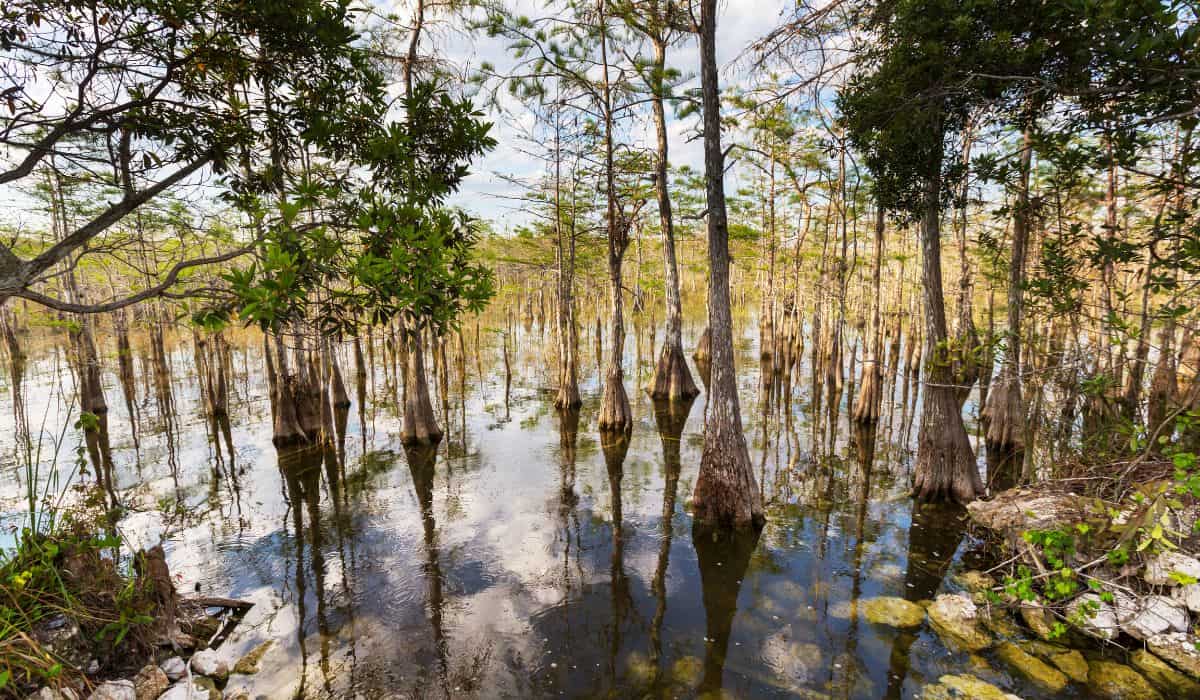
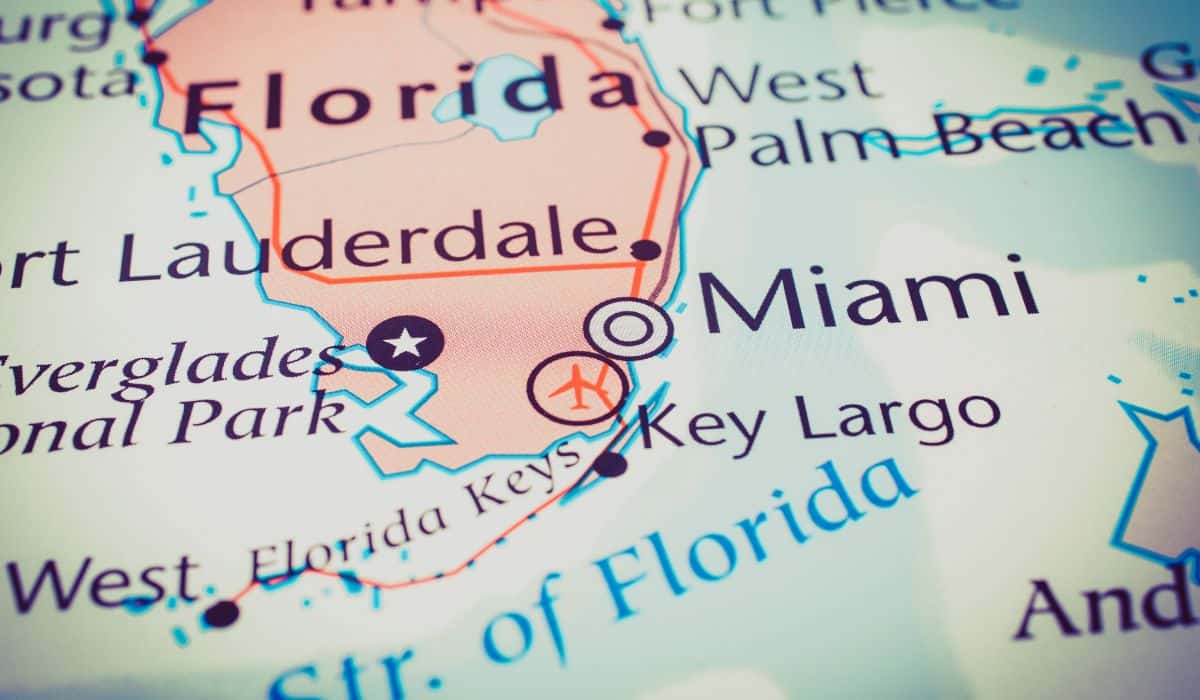
History of the Everglades
The Everglades once covered 11,000 square miles of South Florida. 100 years ago, water flowed down the Kissimmee River into Lake Okeechobee, then south through the Everglades, and finally, into Florida Bay. The shallow. slow-moving water created the many habitats known in the Everglades, like ponds, sloughs, sawgrass marshes, and hardwood hammocks. While water in the Everglades is often referred to as swampy, the truth is, it’s more like a slow-flowing river. In fact, the Everglades were dubbed the River of Grass by Marjory Stoneman Douglas in 1947.
Everything changed when early colonial settlers in the 1800s began to develop the region into farmland and communities. Developers dug canals to drain the wetlands. This alteration of the natural water flow in South Florida continued. In 1948, Congress authorized the U.S. Army Corps of Engineers to construct a system of roads, canals, levees, and water-control structures stretching throughout South Florida to continue draining the wetlands. As a result, the Everglades are now 50% of what they once were.
The alteration of the wetlands—combined with increasing population—damaged the natural system. According to the National Park Service, with the support of many early conservationists, scientists, and other advocates, Everglades National Park was established in 1947 to conserve the natural landscape and prevent further degradation of its land, plants, and animals.
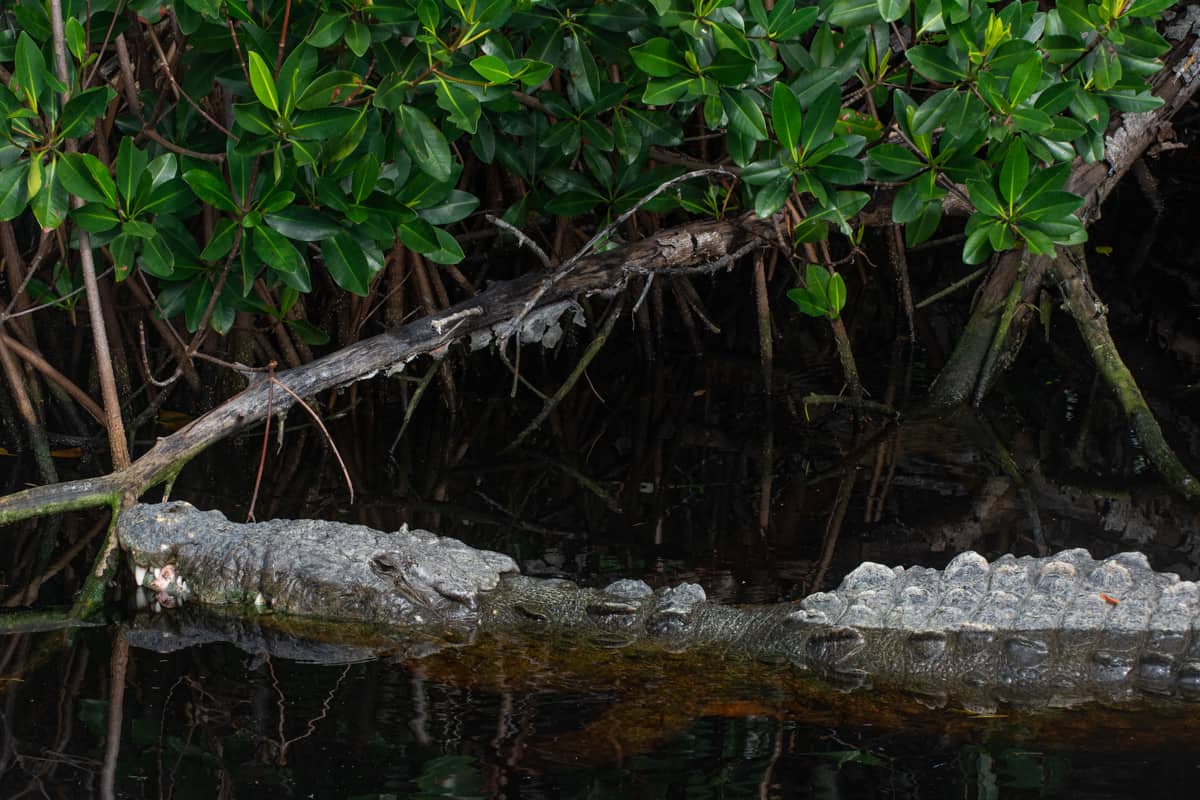
Crocodile or alligator?
As I mentioned above, the Everglades is the only place in the world to see both crocodiles and alligators. How do you tell the difference between crocodiles and alligators?
Crocodiles have a pointer, v-shaped snout, while alligators have a rounder, u-shaped snout. Alligators are more numerous in Florida and typically found in freshwater, while the more rare and elusive crocodile prefers salty or brackish water, as well as freshwater.
When an alligator has its mouth shut, only their upper teeth are visible. When a crocodile has its mouth shut, it shows off a toothy grin with both upper and lower teeth visible.
Lastly, alligators have a darker, almost black color, while crocodiles tend to be a lighter tan color.
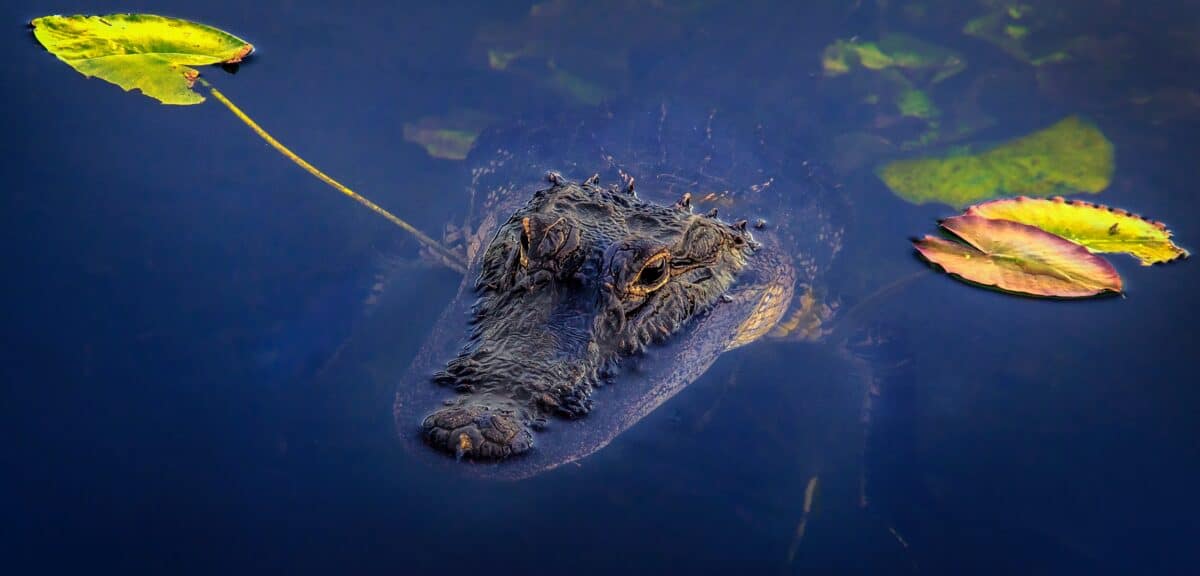
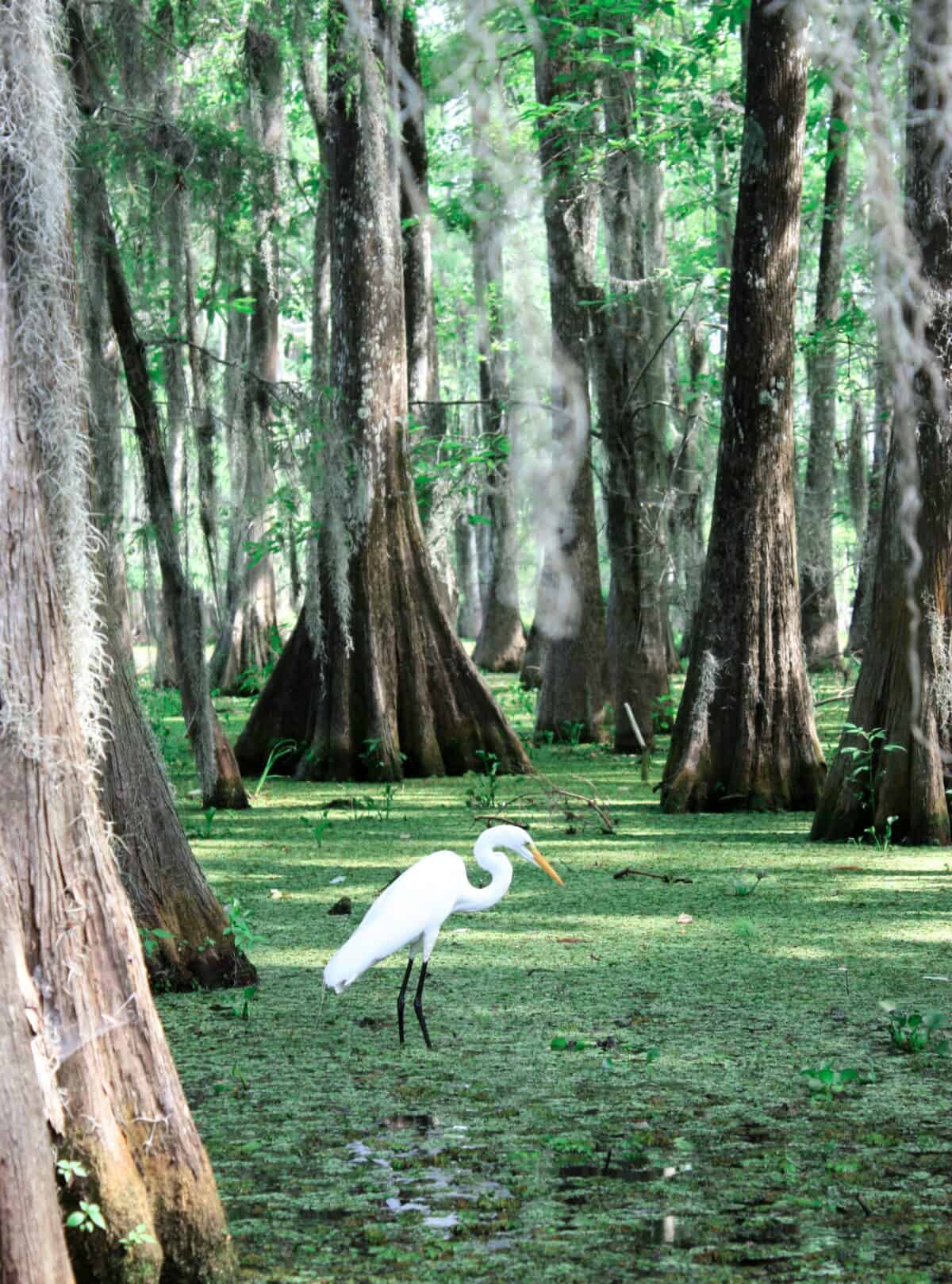
Things to know before you go – Everglades National Park
Three main entry points exist for the park: the Gulf Coast Visitor Center, which is closest to Naples and south of Everglades City, the Shark Valley area that can be accessed by US 41 (also known as the Tamiami Trail) and the Ernest F. Coe Visitor Center in Homestead — the park’s main headquarters. Personally, I’ve spent the most time exploring the Homestead entrance.
The three entrances are not connected due to the swampy terrain of the park. Therefore, you won’t be able to enter the park in one region and drive through it to the others. They are also in different parts of the state. You’ll want to pick one region to explore in a day. As of right now, there is no advance reservation system needed to enter the park.
The Gulf Coast visitor access area serves as the gateway for exploring the Ten Thousand Islands, a maze of mangrove islands and waterways that extends to Flamingo and Florida Bay accessible only by boat in this region. I’ve never explored this region of the park from this entrance, but it is on my list. The original Gulf Coast Visitor Center was destroyed by Hurricane Irma in September of 2017. The temporary Visitor Contact Station was destroyed by Hurricane Ian in 2022. Visitor services are limited.
All park visitors are required to pay an entrance fee, which is $35 per vehicle. You can also use an interagency annual pass to enter. Visitor centers and entrance stations have set operating hours, but the park remains open 24/7.
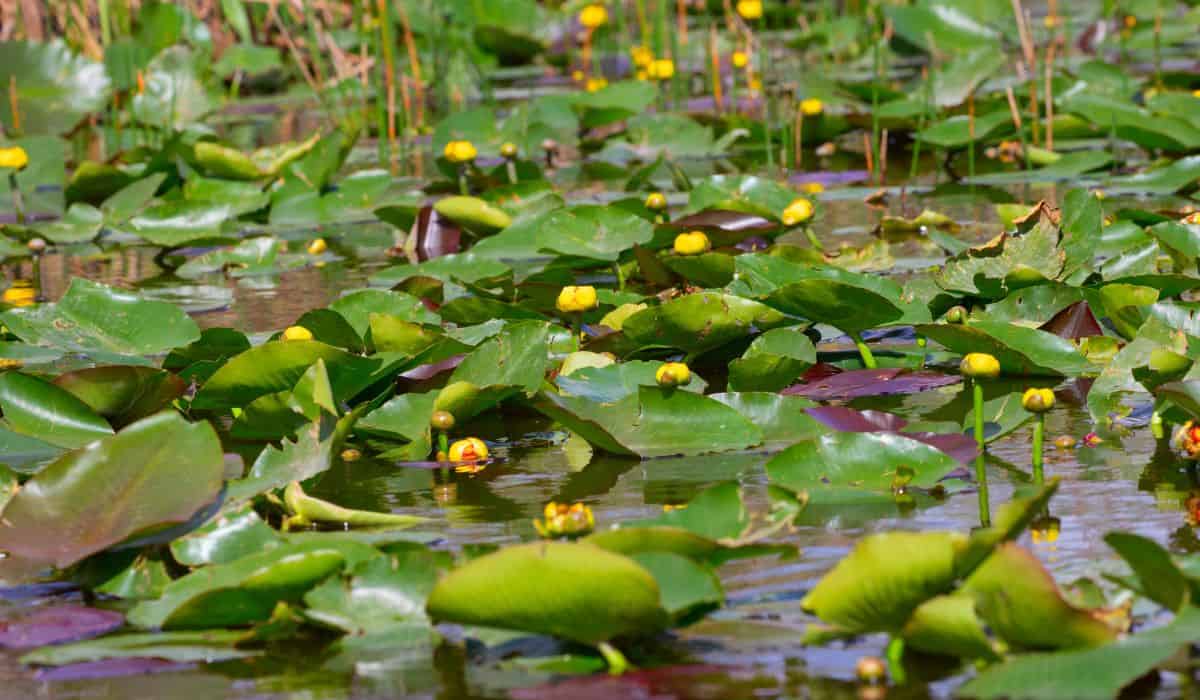
When to visit Everglades National Park with kids
South Florida has two main seasons: wet season (which runs from June through October), and dry season (which runs from November through May). The dry season is more popular due to lower and more comfortable temperatures, lessening of mosquitoes, and an abundance of wildlife.
In the dry season, temperatures reach average highs of 77°F and lows of 53°F. Sometimes, strong cold fronts bring even chillier weather!
I have to warn you, in the summer, the bugs are bad — really bad. During cooler months, the insects such as mosquitoes and biting flies may still occur in some areas and at dusk and dawn. Come prepared with mosquito repellent, and maybe even head nets or bug jackets.
One thing about the dry season that makes for better wildlife viewing is lower water levels due to less rain. This means that the animals gather around water holes. There have been times when I’ve seen dozens of large alligators all in one small section of a trail. And during winter, the birdwatching is exceptional as many species fly south for warmer temperatures and breeding. In fact, the Everglades National Park is the most significant breeding ground for wading birds in North America, and it is a critical stopover habitat for birds migrating along the Atlantic Flyway, such as the Yellow-throated Warbler.
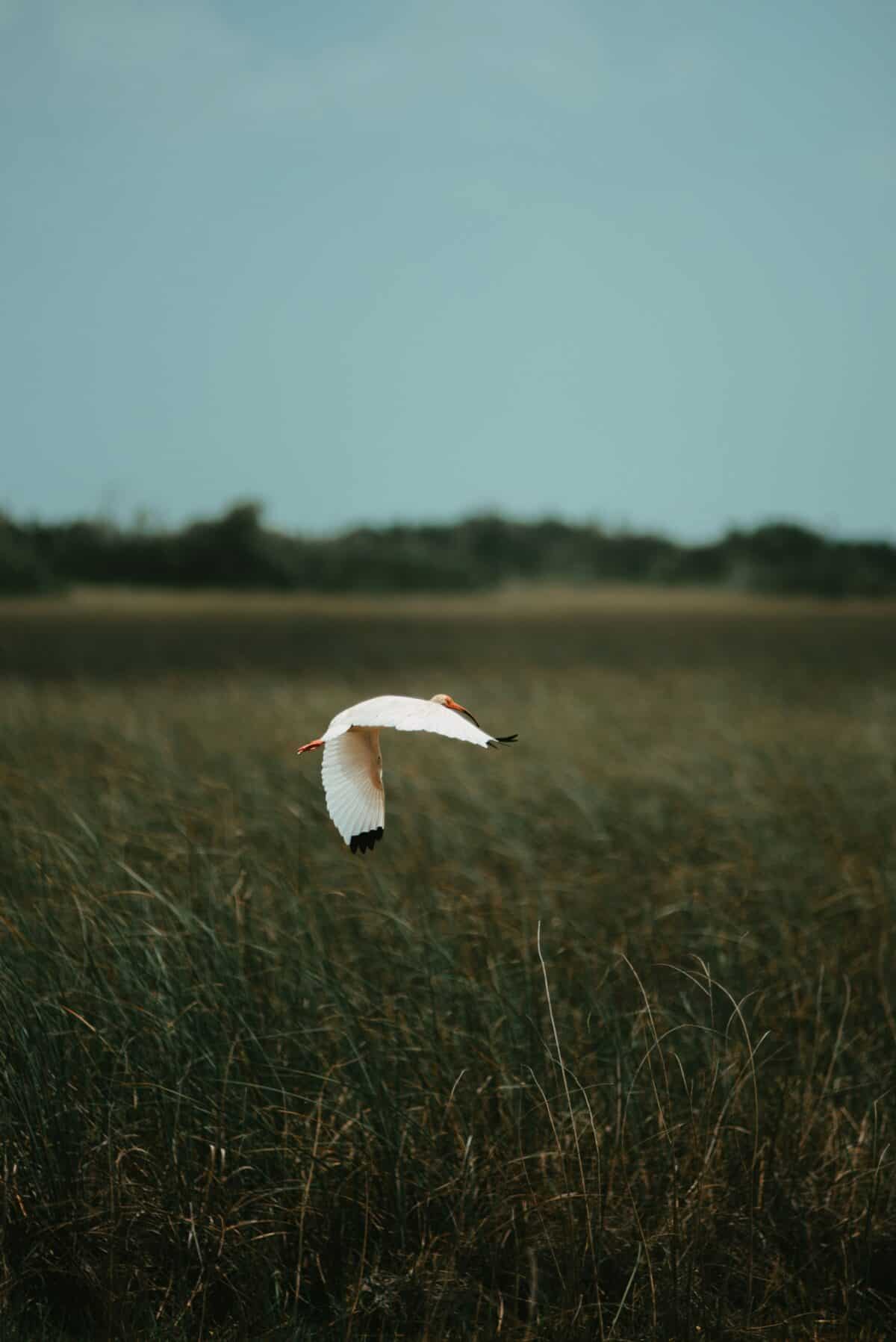
Everglades National Park nature trails for kids
Hiking in the Everglades means you can explore a variety of habitats, from tree islands to swamps, sawgrass marsh, and wet prairie. Most hikes are short, interpretive, flat trails that are perfect for young kids, especially because you can often see a lot of wildlife.
At the start of the Royal Palm Information Station and Bookstore, in the Homestead entrance, you can find two must-see trails, the Anhinga Trail and Gumbo Limbo Trail. Additionally, Ranger-led walks and talks are conducted here, and the visitor station includes a small bookstore, restrooms, and vending machines.
Kid-friendly hiking trails
Anhinga Trail: This trail is one of my favorites and if you do nothing else in the Everglades, you should do this! It’s a short 0.8-mile loop on a paved path with a boardwalk over the water. It always has good wildlife viewing, like gators, turtles, osprey, anhinga, cormorants, purple gallinules, black vultures, snakes and more. On this trail (and all trails really) I recommend taking your time and observing the wildlife. You’ll see anhingas swimming in the water and popping up with their bill piercing a fish they then juggle to toss down their throats. After a dive, they’ll often jump up to a branch and spread out their wings to dry their feathers, since they lack the oil glands other birds have to stay dry.
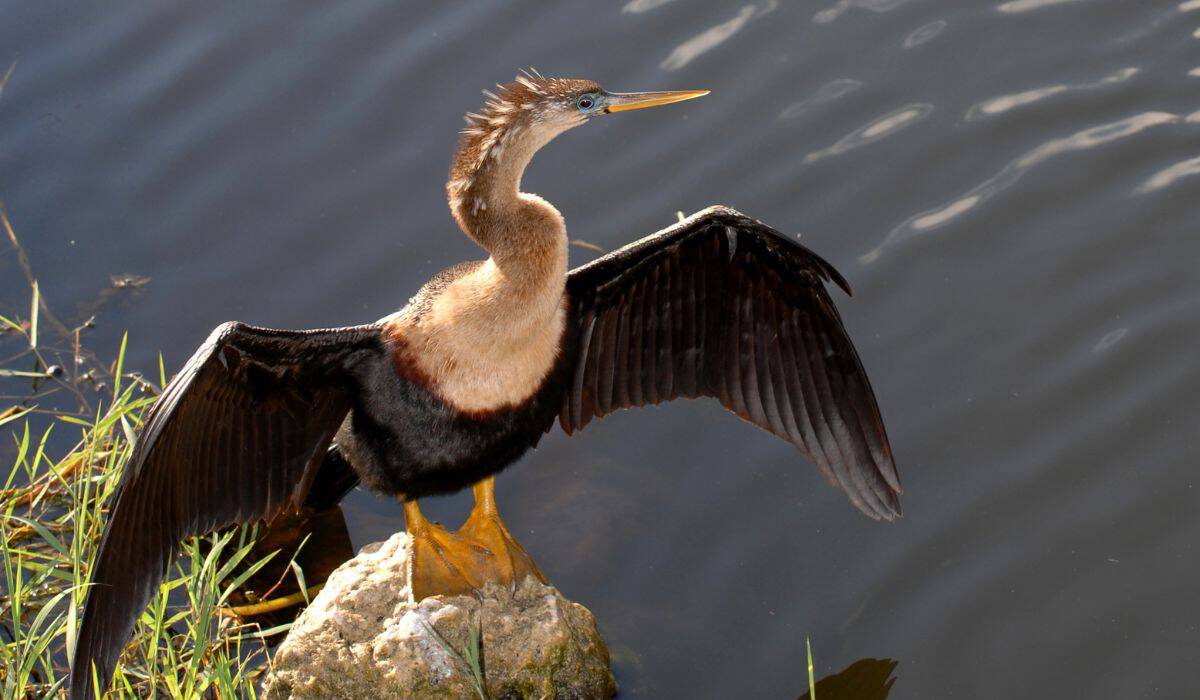
Gumbo Limbo Trail: This 0.4-mile trail winds through through dense forest. It includes views of the famous Gumbo Limbo, affectionally known as the tourist tree. Why? Because its peeling red bark looks like the skin of a sunburnt tourist!
Pinelands Trail: An easy 0.4-mile paved trail through a pine forest, one of the many habitats found in Everglades National Park.
Mahogany Hammock Trail: This 0.5-mile boardwalk trail meanders through a dense, jungle-like hardwood hammock. Plants include gumbo-limbo trees, air plants, and the largest living mahogany tree (Swietenia mahogani) in the United States. Because the park is so remote, this trail’s parking lot is one of the best to view the International Space Station if you take an evening star walk or drive,
Pa-hay-okee Trail: This is a very easy .2-mile boardwalk loop where you can view the iconic sawgrass prairie.
Eco Pond Trail: This half-mile loop around a pond is great for bird watching.
Bobcat boardwalk: A short, easy 1-mile out and back trail through a sawgrass slough and hardwood forest. This trail is accessed at the Shark Valley entrance.
Otter Cave Hammock Trail: A 0.5-mile out-and-back rough limestone trail through a tropical hardwood forest with small footbridges over a small stream. Check at the Shark Valley Visitor Center for the current conditions of the trail; it sometimes can be flooded during the summer.
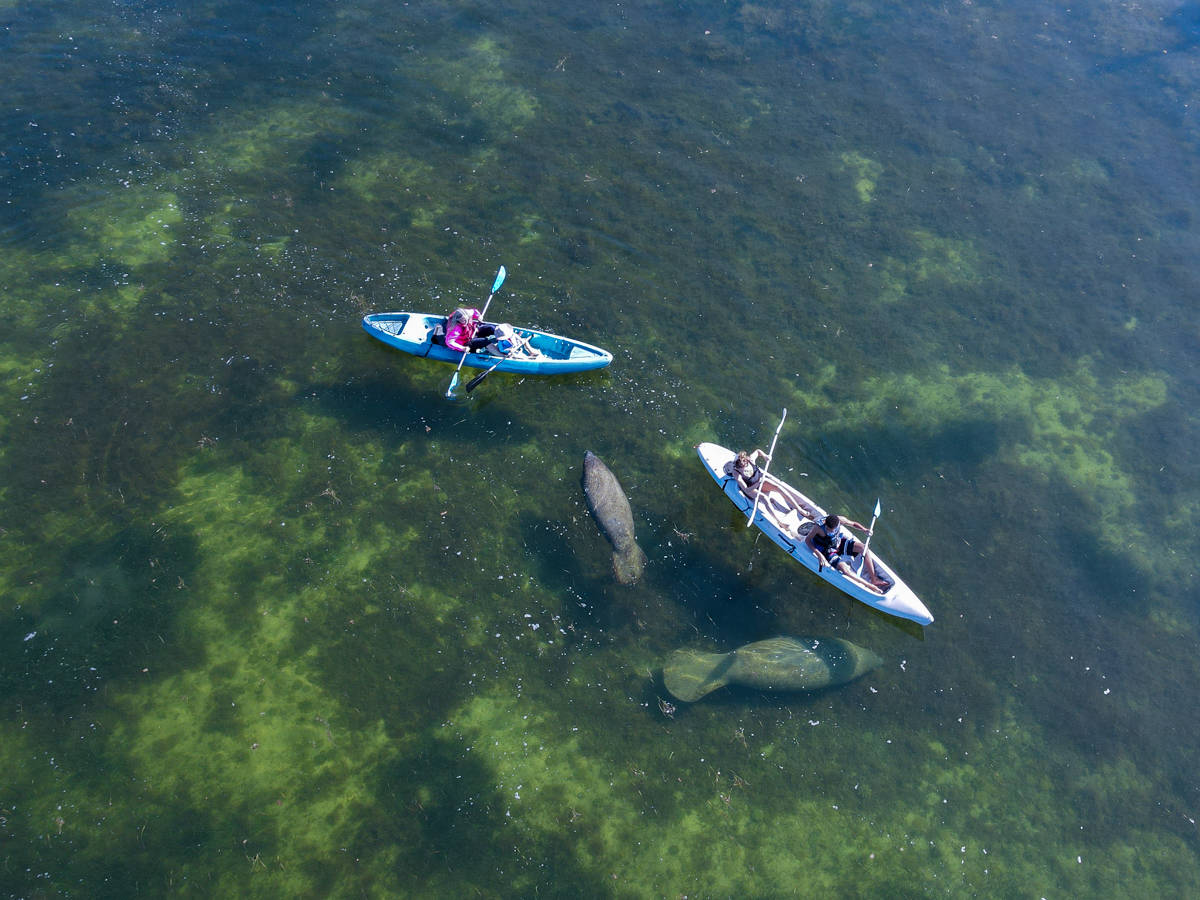
Exploring Everglades via boat
If you know anything about me, you know I love the water. In the Everglades, you can explore the water — both fresh and salt — in a variety of ways. One thing to note is that water levels vary drastically by season, and some trails can become dry and require carrying the canoe or kayak. The trails also vary from beginner to advanced, and can be as long or short as you want, depending on where you go. So, always check conditions before you head out, stay within your limits of paddling, and have a plan.
Remember too, this is the home of crocodiles and alligators, which you will undoubtedly see. Keep a safe distance when observing the large reptiles— especially during breeding season when males are more active and territorial, and give lots of space to nesting mothers.
Kayaks and canoes
You can bring your own kayak or canoe, and there are also two places to rent canoes and kayaks within the park, one in Flamingo at the Homestead entrance and the west side of the park at the Gulf Coast Visitor Center.
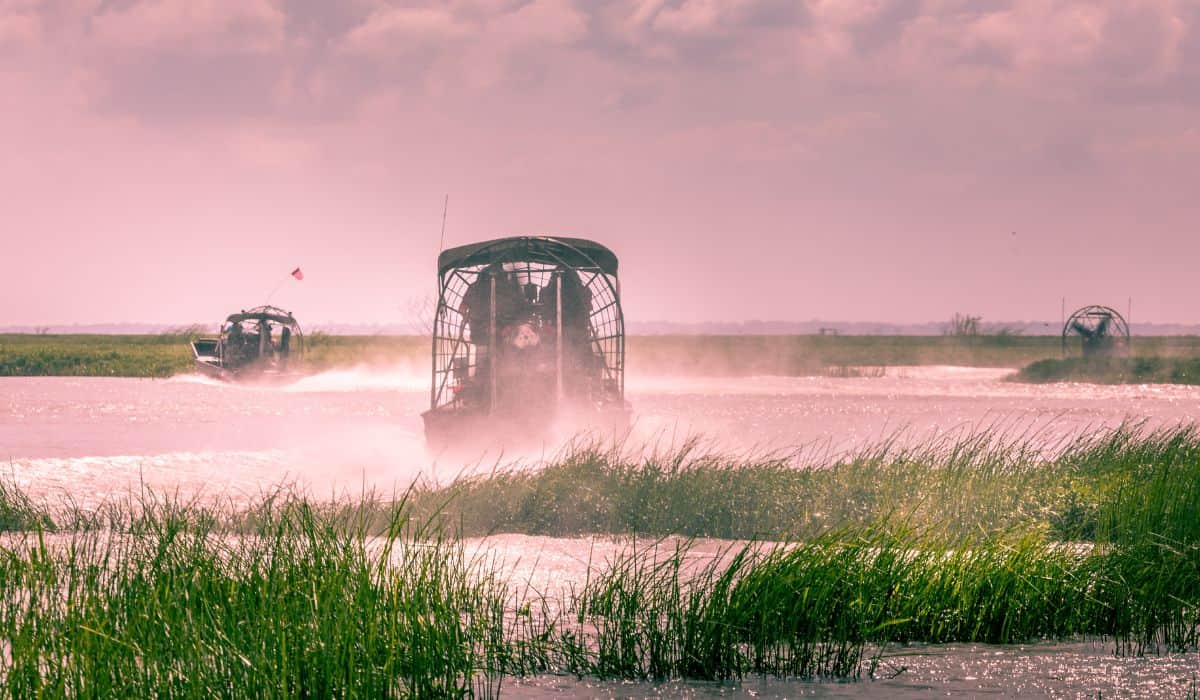
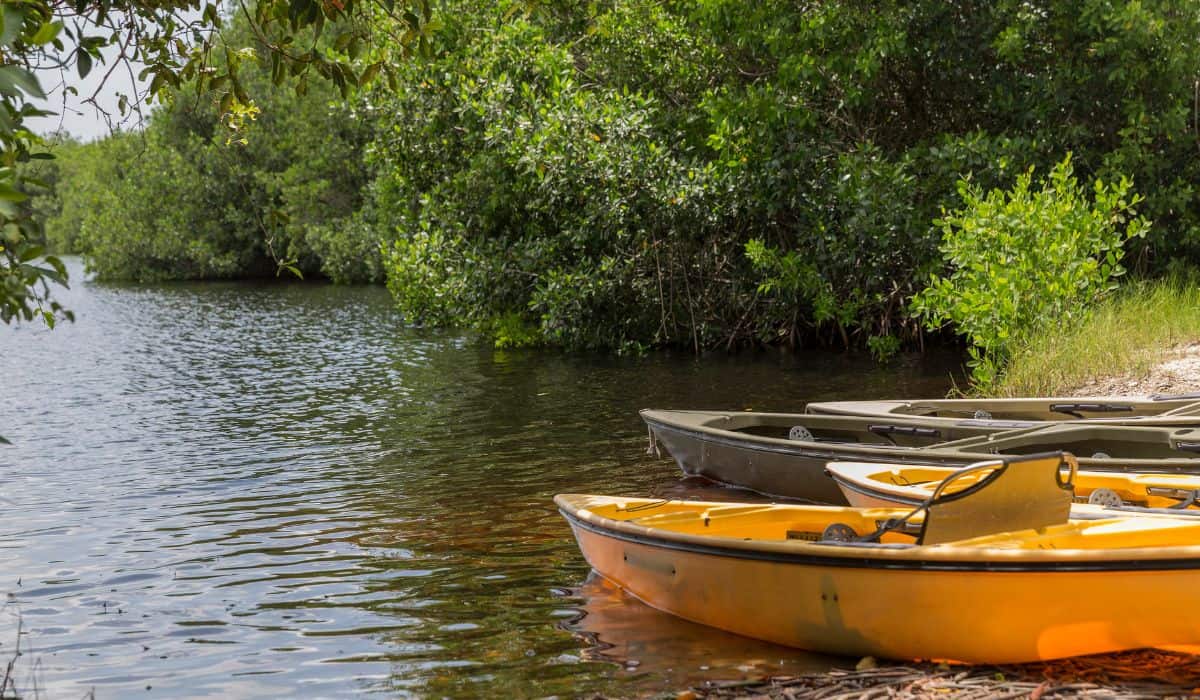
Boat tours and airboats
Flamingo also offers two 90-minute boat tour rides, one into the Everglades freshwater backcountry and another into Florida Bay. When it comes to taking boat tours with kids, I recommend bringing a lot of snacks and water to keep them occupied, especially if they are younger. Flamingo is one of the best places to see crocodiles and manatees, so be sure to spend some time walking around the marina.
Boat tour tickets may be purchased in the Marina Store. Visit www.flamingoeverglades.com or call (352) 701-6581 for more information. Boat tours of Whitewater Bay and Florida Bay depart from the Flamingo Marina located next to the Flamingo Visitor Center (38 miles into the park, 50 miles from Homestead, Fla).
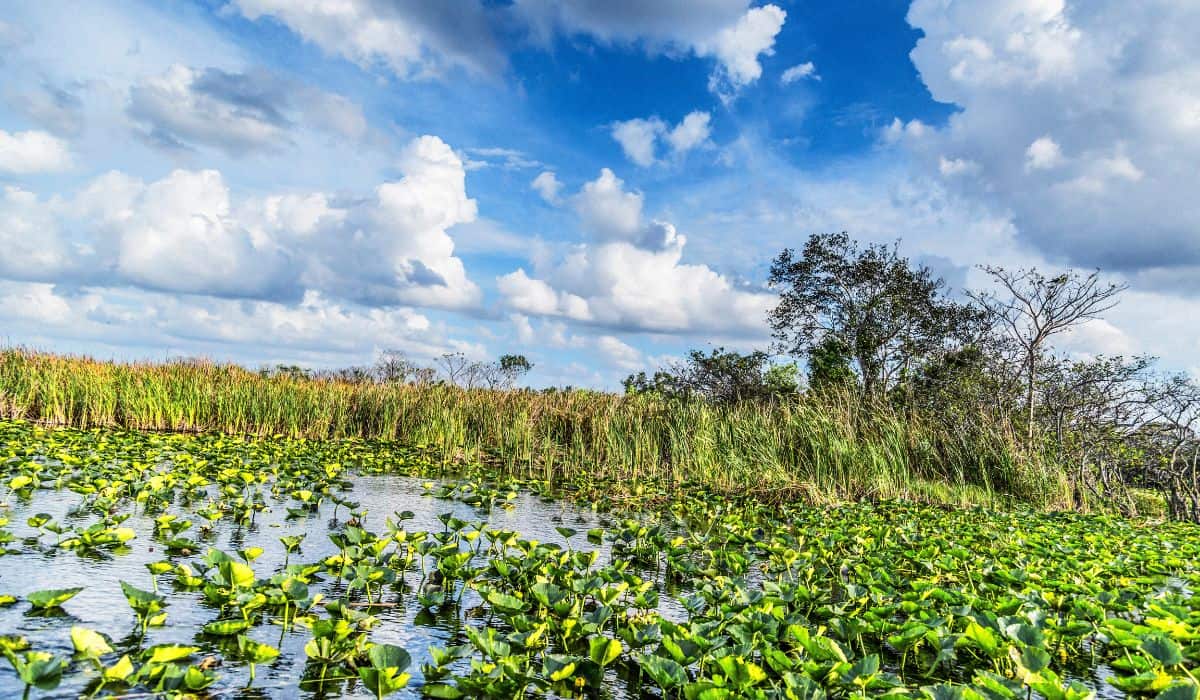
Camping in Everglades National Park
If you’re interested in camping, there are just campgrounds in the park: Long Pine Key Campground and Flamingo Campground. Both are accessible from the Homestead entrance and accommodate tents and RV’s with a limited number of group sites. You can make reservations with Everglades Guest Services or by calling 1-855-708-2207.
The Flamingo campground, which is at the very end of the park — about 45-minutes from the Ernest F. Coe Visitor Center — offers solar-heated showers, two dump stations, picnic tables, grills, and an amphitheater for seasonal Ranger programs. And newly available are safari-style Eco tents, complete with fans and electricity (I haven’t tried these out yet, but they look nice)!
Long Pine Key campground is open seasonally November-May, and is just a few miles from the Ernest F. Coe Visitor Center. This campground has cold showers, restrooms, a dump station, and a fill station.
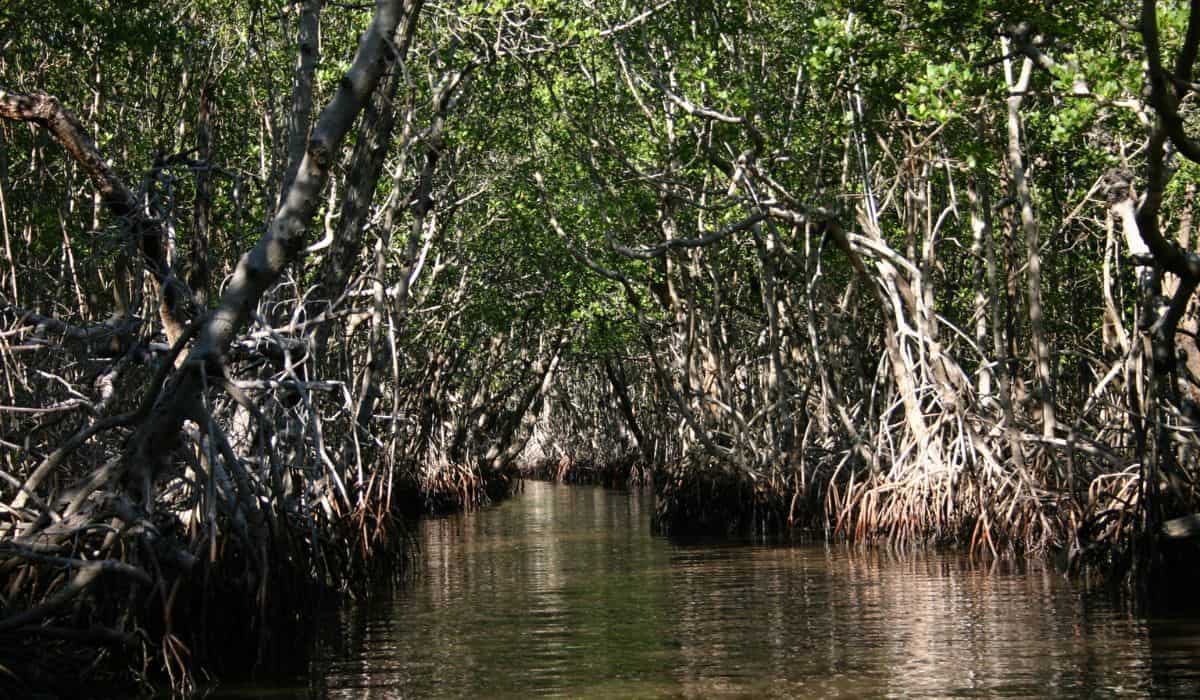
Shark Valley tram and bike rentals
If you’re headed to the Shark Valley entrance, the 15-mile path is best viewed via a 2-hour tram ride or bike ride (I don’t recommend walking it). Halfway through the trail, there is a 45-foot high observation tower, a water fountain with a water bottle refill station, and restrooms.
The two short hikes great for walking and kids (mentioned above) can be started close to the visitor center, where you can also purchase tickets for the tram or rent bikes. If you have young kids, you can also request bikes with seat attachment for children up to 40 pounds.
If you decide to bike, note that there is virtually no shade on the path. Also, Florida is the lightning capital of the U.S. Check the weather so you don’t get caught in a storm. Most of the thunderstorms occur during the mid to late afternoon hours, so the best riding times are in the morning when it’s still a little cooler.
If you opt for the tram, the tour operator gives you lots of info about the Everglades, the animals, the history of the observation tower, and more.
Prices for the tram ride:
- Adults (13-61) $31.00
- Seniors (62+) $24.00
- Children (3-12) $16.00

Slough slog
Most people wouldn’t dream of stepping foot off-trail and into the gator-infested waters of the Everglades. But that’s exactly what happens if you decide to take a slough slog. Unless you are going with someone who has gone before and knows what they are doing, I suggest doing this with the NPS ranger-led program,
You’ll trek through a a sawgrass prairie before making your way into the shallow, swamp-like body of water of a cypress dome — a freshwater forested wetland that appears like a tree island. The name comes from the dome-like shape of treetops, formed by smaller trees growing on the edge where the water is shallow, while taller trees grow at the center in deeper water.
During a slough slog, the water could get up to your waist at some points. It’s quiet, peaceful (or maybe a bit nerve-wracking), and as you journey into the cypress trees covered in air plants, it feels like entering an entirely different world — like something out of a fantasy film. You might pass an alligator hole, hear the prehistoric call of a great blue heron, glimpse owls, snakes, tree frogs and more. Seriously, watch where you put your hand because mine has come a bit too-close-for-comfort to a resting cottonmouth. It’s honestly one of my favorite things to do in the Everglades and share with any willing friend who will join me! If you have younger kids, just check with rangers about water levels.
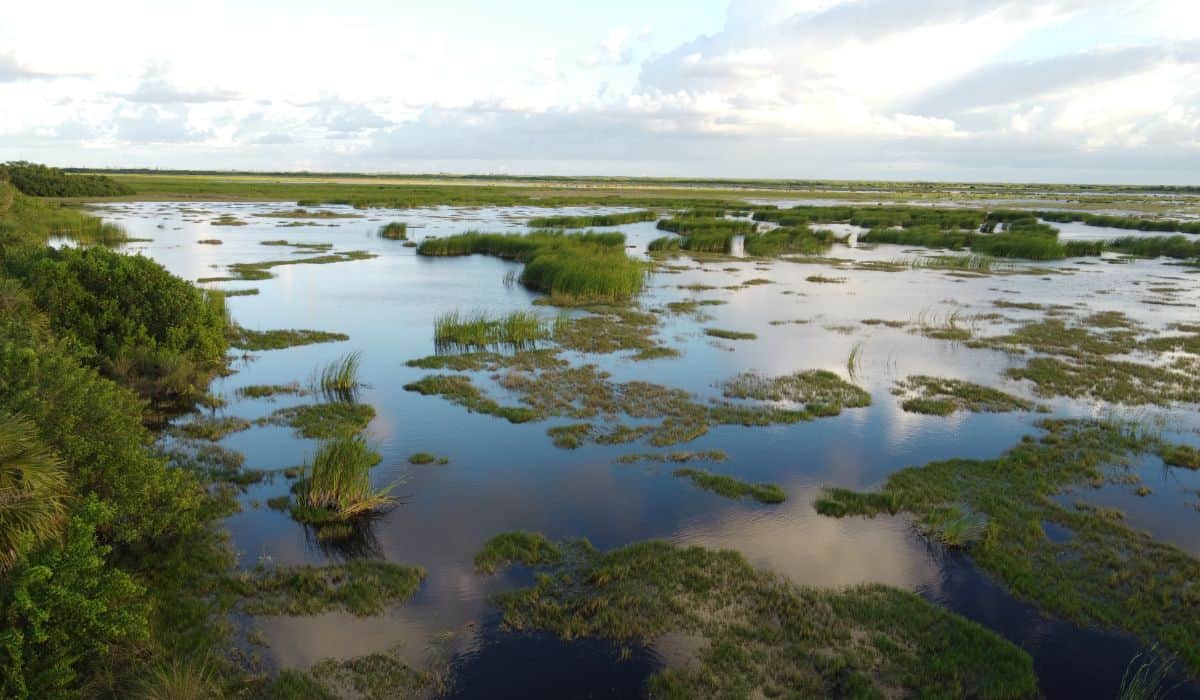
Ranger-led programs and Junior Ranger program
Like many US national parks, the Everglades has tons of ranger-led programs and walks, from guided hikes and bird-watching to slough slogs and guided paddles.
We love the Junior Ranger program at the National Parks and state parks when they have them, and have done them at several across the country. We recently even did a Junior Refuge Manager Program at the Arthur M. Loxahatchee National Wildlife Refuge in South Florida, which was new to us. I highly recommend doing this as an activity during your trip.
The Everglades provides an online digital copy of the booklet you can request as well, and free coloring pages are provided on the website.
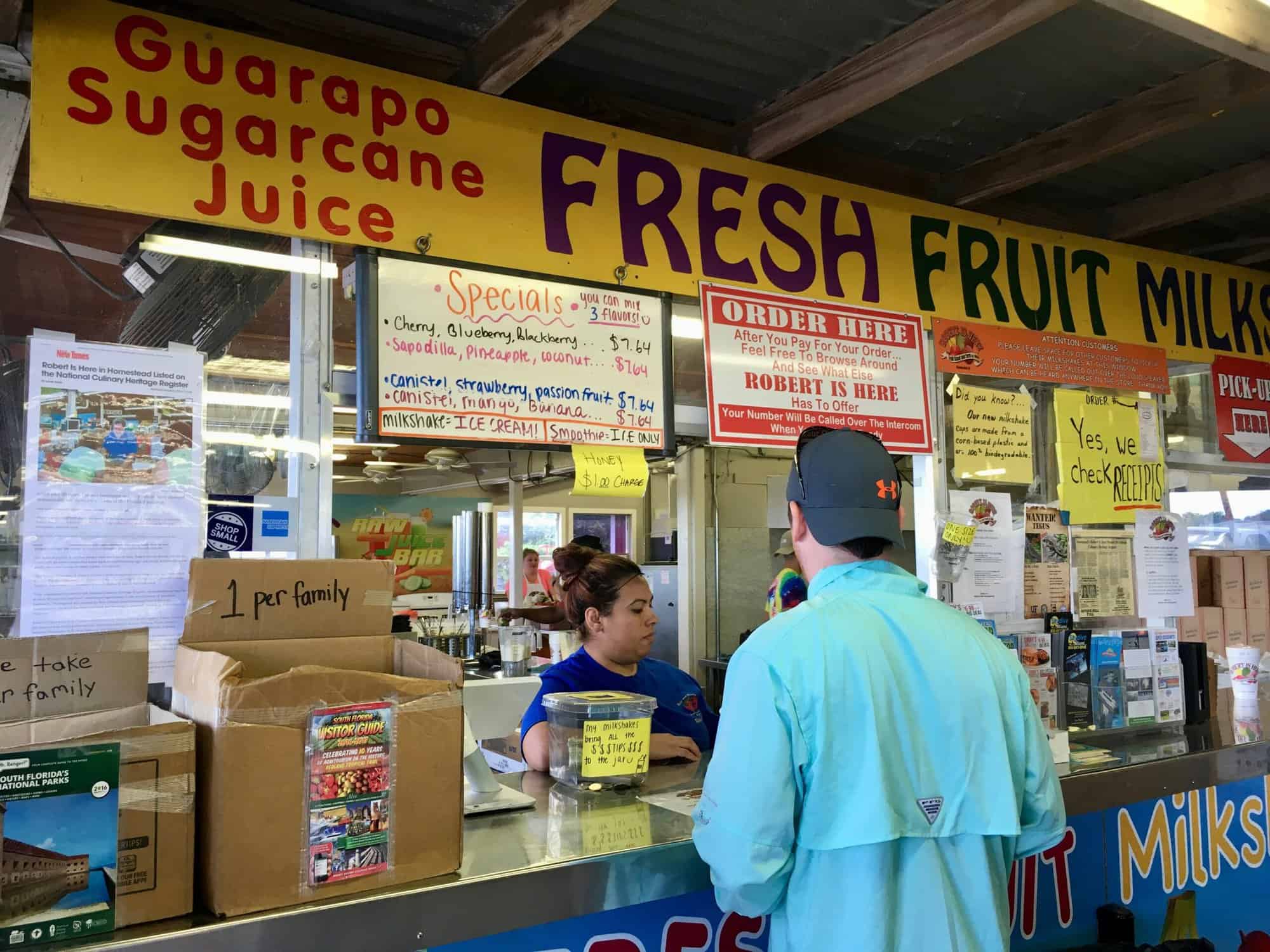
Robert is Here fruit stand
As a side note, if you’re going to the Homestead entrance, a stop at the Robert is Here Fruit Stand is a must. The fruit stand is family-owned and operated and specializes in rare and exotic fruits and vegetables, like canistel, guava, dragon fruit, sapodilla, and mamey, mostly grown right on the farm. Every day, the staff hand-cuts the fruit for their smoothies and milkshakes. I personally love the key lime milkshake or any smoothies with guava and passionfruit.
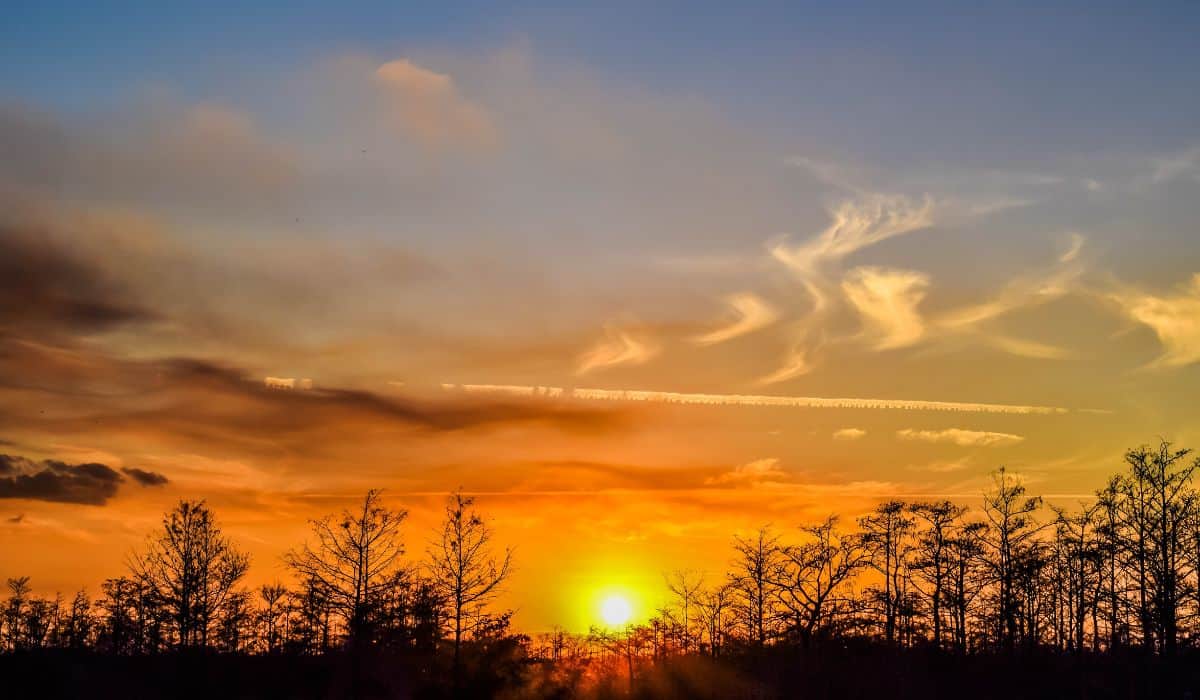
Have you ever been to Everglades National Park?
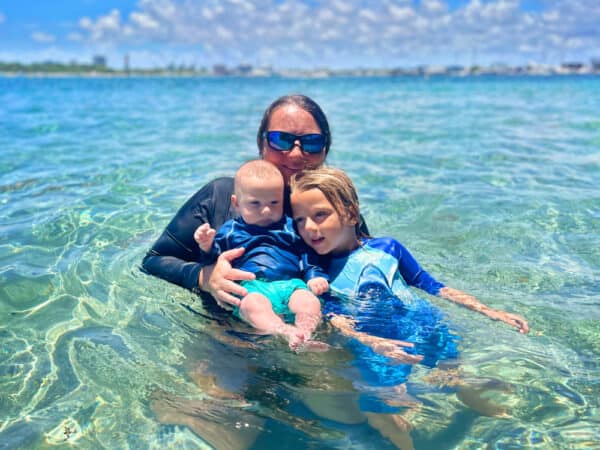
About the author
Bethany Augliere is a marine biologist, conservationist, and storyteller. She has always been inspired to encourage people to fall in love with nature and explore their own backyard, in hopes of instilling a desire to help protect the Earth and its creatures — especially the ocean. Her work has brought her eye-to-eye with giant tiger sharks, playful dolphins, curious manta rays, and gentle manatees. Now, as a mom, she aspires to share those adventures with her family, whether it’s kayaking in the Everglades or searching for shark teeth on the beach.
You can find more from Bethany online in the following locations:
Instagram: @wilder_seas
Facebook: @bethanyaugliere
Website: www.bethanyaugliere.com
RWMC posts: Bethany Augliere







